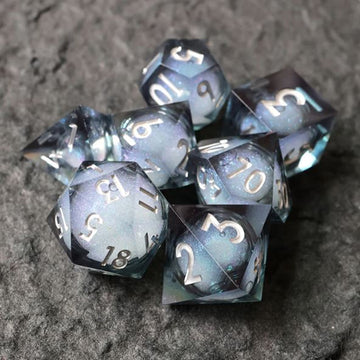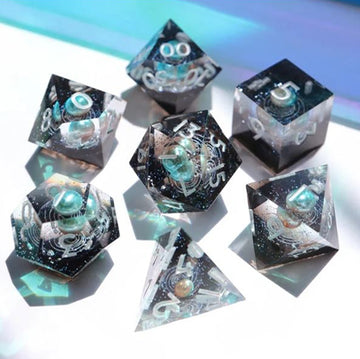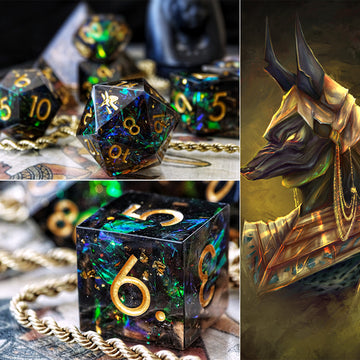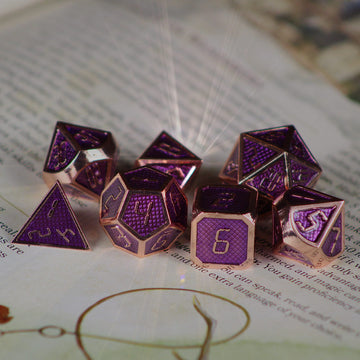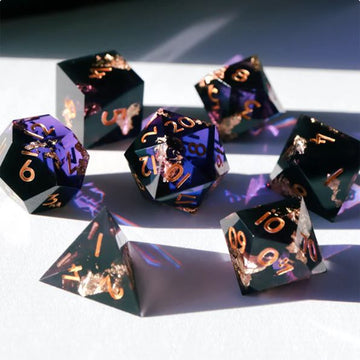Medieval Festivals: The Feasts for the Common Folk and the Poor
(And Some Common DnD Ideas)
By Riley Rath
Title Image © Wenjun Lin
This is part 2 of a blog post series on medieval feasts and banquets, created so DnD players can have better "feast encounters." Once the other blog posts are up, you can read part 1 here (medieval banquets), part 3 here (food and activities), and part 4 here (NPCs and resources for making your own)!
How Were Feasts and Festivals Different?
For starters, these were usually all-encompassing events that included everyone in a village or town. Usually they were "sponsored" by the local monastery or the local lord, but everyone in the village pitched in to make sure there was more than enough food. Like banquets, these events featured delicious dishes like roasted peacocks and fancy pastries, although perhaps less lavish and excessive than those of noble banquets. Some of these would last a single day, others could last well over a week.
Second, they were always attached to some sort of special occasion; they would usually commemorate an important noble birth, wedding, or royal coronation. "Days of Thanksgiving" were feasts dedicated to particular victories in battle (similar to USA "Independance Day" or UK "Guy Fawkes Day"). Religious feast days were particularly important to peasants as it was one of the few days where work would be totally suspended. And of course, there was always the flowery May Day, which marked the beginning of summer weather, and the bountiful fall harvest festivals.
Some medieval and renaissance feasts served social roles more important than mere celebration. Carnival was celebrated throughout Europe, a feast to use up food stores prior to the beginning of Lent. But some areas took it a step further, elevating it (and other) festivals to a type of festival known as a "Feast of Fools." During these festivals, nearly all social norms would be turned upside down. Beggars would be dressed as bishops and mocked in a sham parade, licentiousness (medieval-y term of "lack of moral restraint") was encouraged, and there was a blurring of social boundaries and roles (demonstrated clearly by the masquerade masks).
As modern people, we find these celebrations perplexing. While they are probably a "safety valve" to let people cut loose once in a while, they most certainly are NOT revolutionary or bitter in character; they are not the unveiled sentiment against the established order. In other words, they mock the status quo not because the status quo is bad, but because it is not ultimate.
For a list of all unique European festivals still practiced today, check out this link!

Third, while banquets often featured entertainment as well, feasts and festivals were filled with them.
Activities would include:
- Dancing: Whether it be a formal dance, traditional maypole, or spontaneous expression of joy, there WILL be dancing.
- Games: It's an off day for leisure! Everyone would be playing games, particularly kids!
- Wrestling/Sparring: Men would gladly demonstrate their strength and martial prowess in front of the whole town... and any interested ladies.
- Comedy and Drama: The royal jester might make himself the fool, or villagers may put on a ridiculous play mocking the everyday fools of society!
- Races: Horses for the merchants, knights, and lords... foot for the peasantry.
- Stone Throwing: As seen in Braveheart, the strongest dude is the one who can throw the rock the farthest.
- Singing: A lively festival is not complete without the charming sounds of singing. Melodic songs tell stories of heroes, forbidden loves, religious icons, and downright raunchy behavior.
- Storytelling: At some point, the crowd would insist that the local historian or legend keeper tell an inspiring tale, maybe even one they have all heard dozens of times before!
- "Rendezvous": Every single person would be using the feast to find a potential mate... especially between May and September... and as the drinks flow, the odds of hooking up increase exponentially...
In a fantasy setting, they would also include:
- Animal Handling: Your ability to wrangle, ride, or tame a wild, magical beast would be a site to behold!
- Magical Displays: Doesn't matter how ubiquitous magic is in your world... everyone likes magic!
If it was in the springtime or summer, the feast would likely be accompanied by tournaments and fairs featuring exotic items from around the continent and beyond.
For more information on Medieval feasts and banquets, please read this EXCELLENT PDF.
Many feasts would be "small," local affairs, like Bilbo Baggins' birthday party at the beginning of The Fellowship of the Ring. Especially in winter. For the grandest feasts of them all (Christmas), indoor feasts among peasants would include around 30 people. Others might be even smaller, more akin to a private meal with select members of the court, like the coronation feast in Netflix's The King (I know that's not exactly the most famous movie ever; it's the Henry the V Timothy Chalamet one).
That said, medieval banquets and festivals could be enormous, like those of England's King Henry VIII. In particular, there was a "political summit" between he and the King of France, known as "The Field of the Cloth of Gold." Over a span of nearly two weeks, over 8,000 guests consumed over 3,000 livestock and 1,300 birds... not to mention countless mugs of beer, pastries, and desserts!
Next Post: The Thing That Makes a Feast a Feast... THE FOOD!!!

Want some festive dice? Check out our Bard dice collection or our Festive Kaleidoscope set!
Riley Rath

Riley is a freelance tabletop games copywriter, content writer, and marketer based out of Spokane, WA. When not playing or writing about board games or DnD, he is busy with family, hiking, cooking, and gardening... very hobbit-like for a 6'4'' dude.



